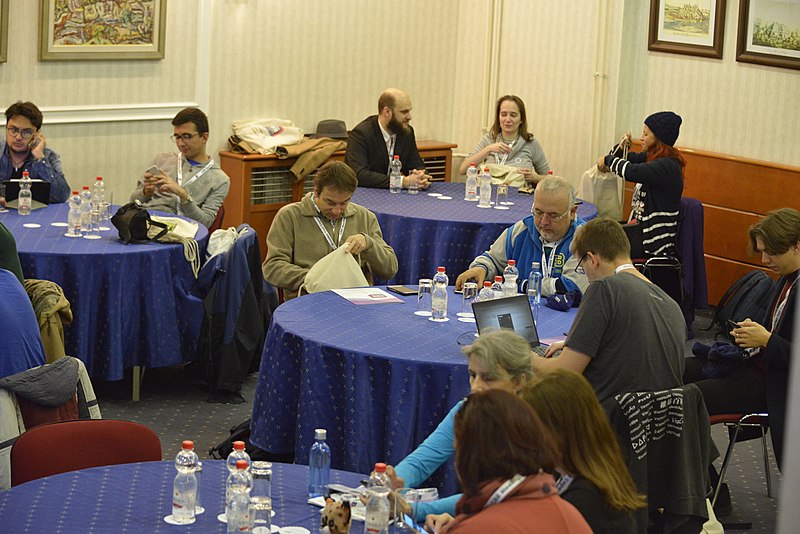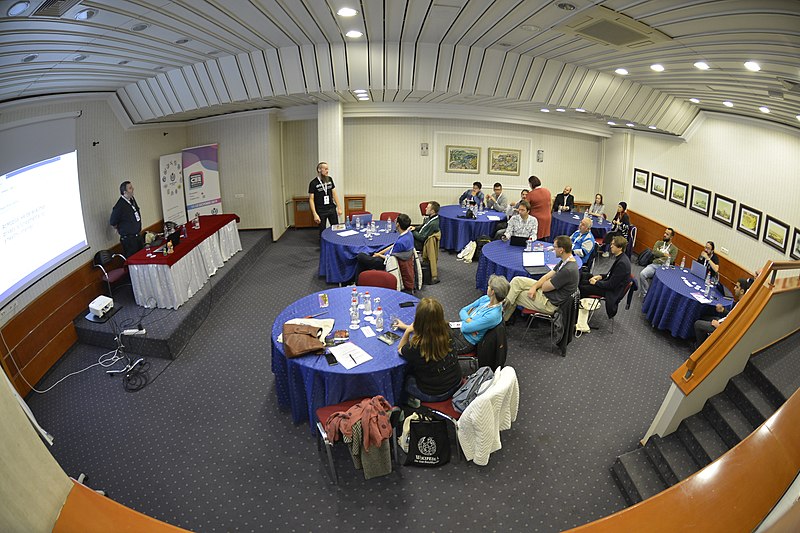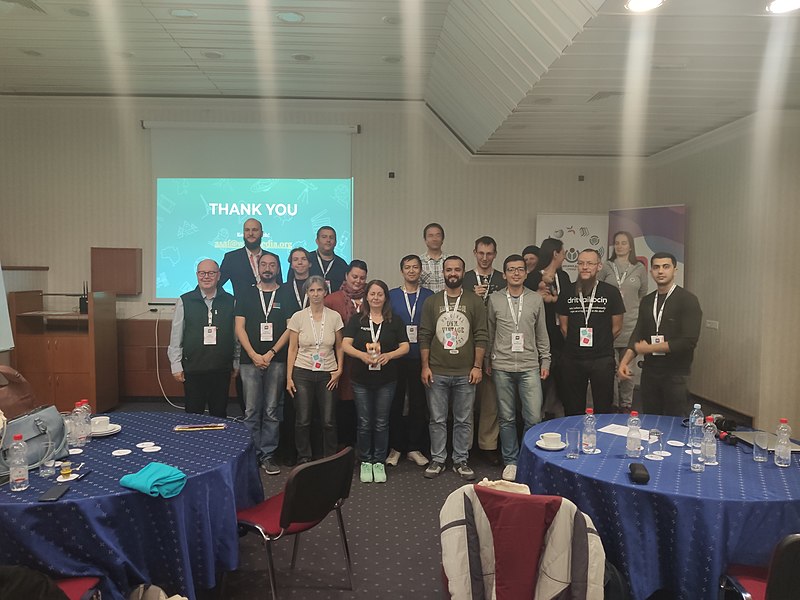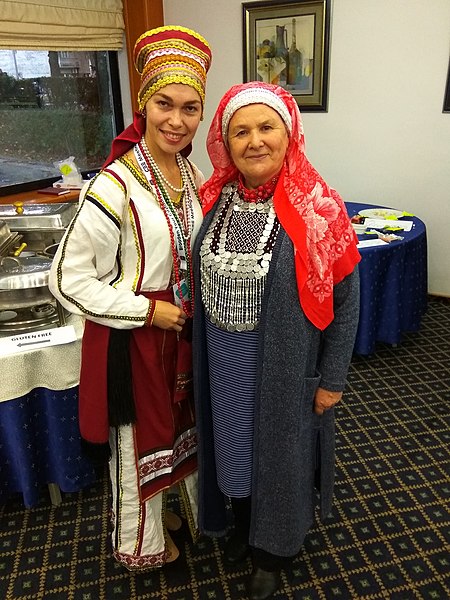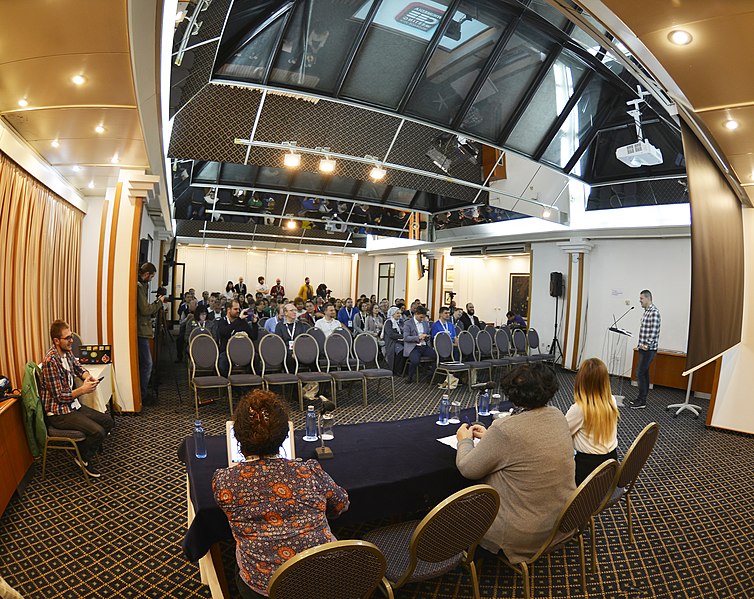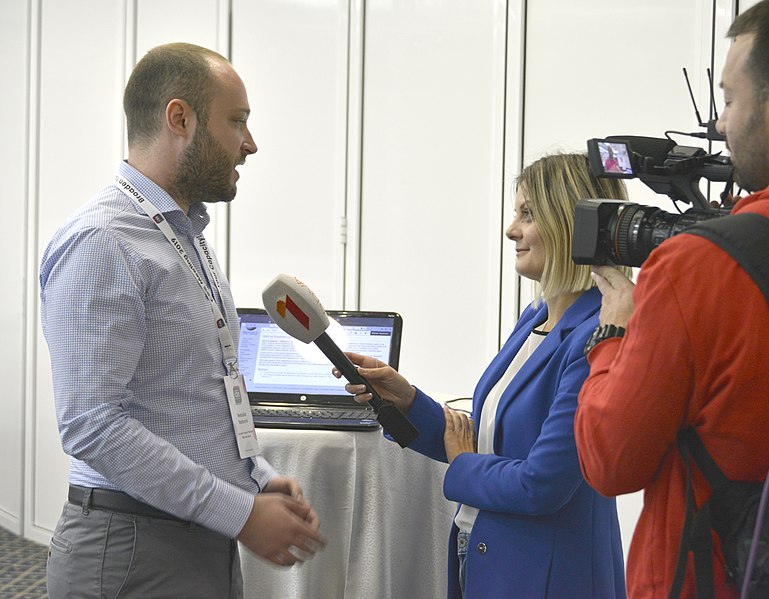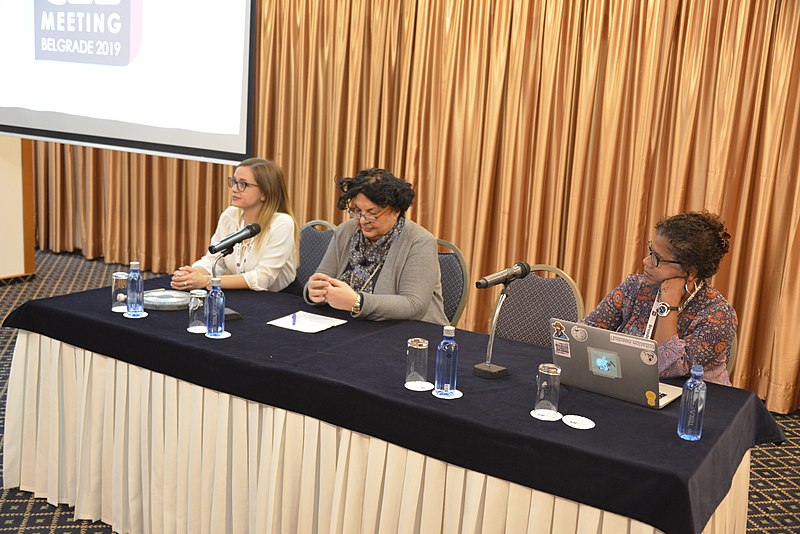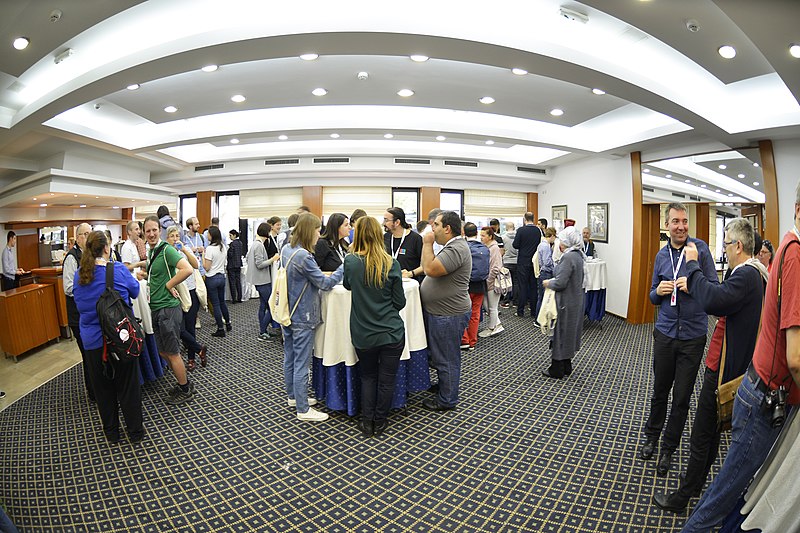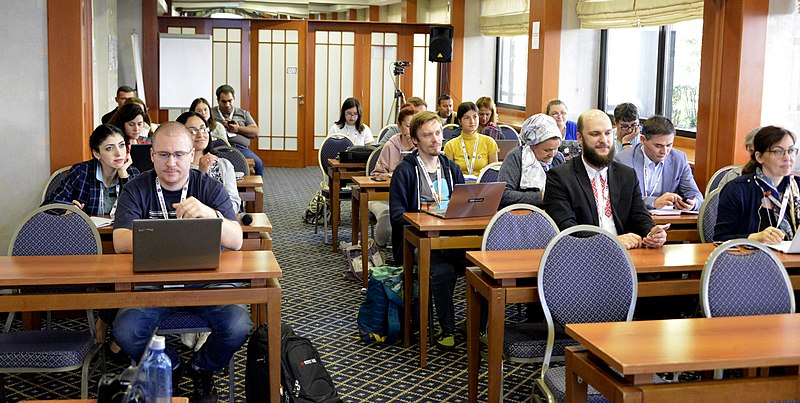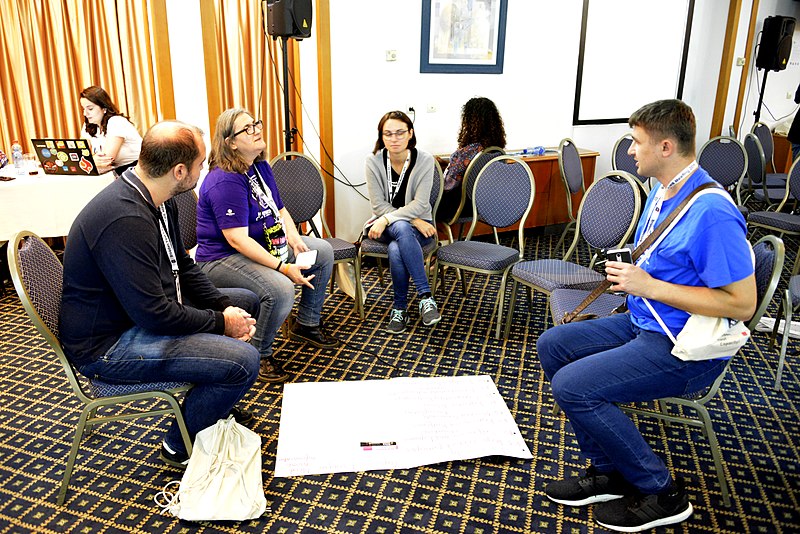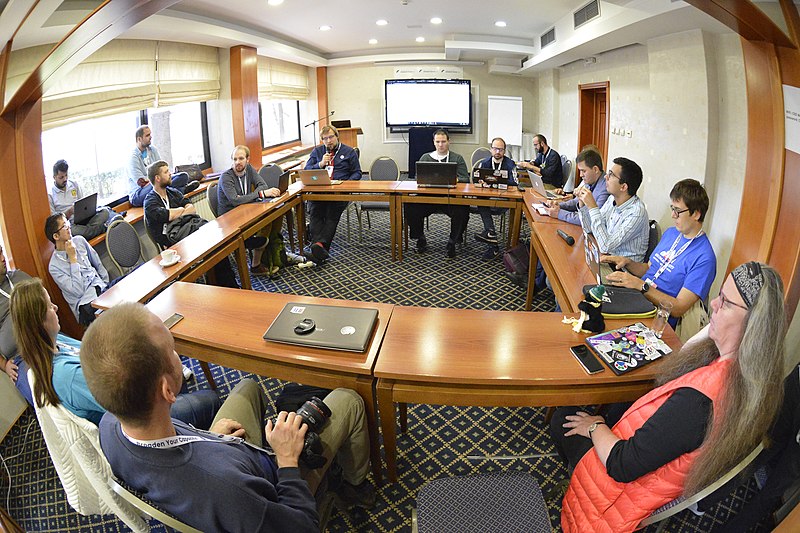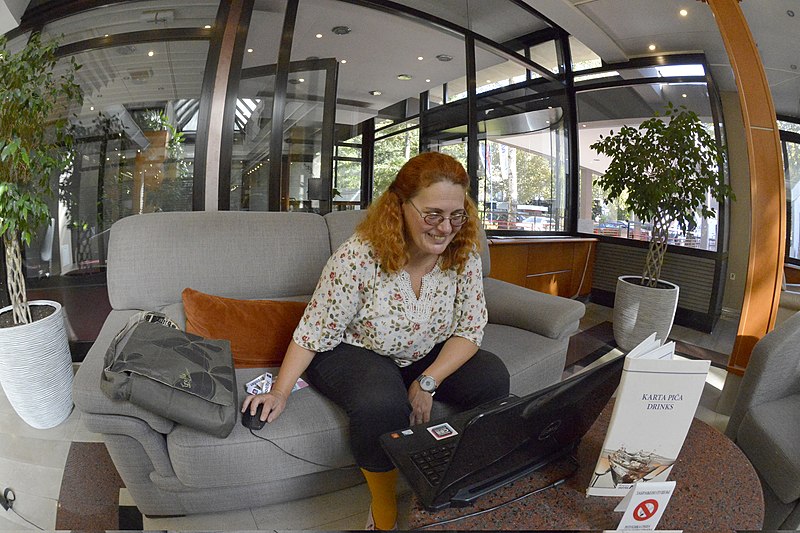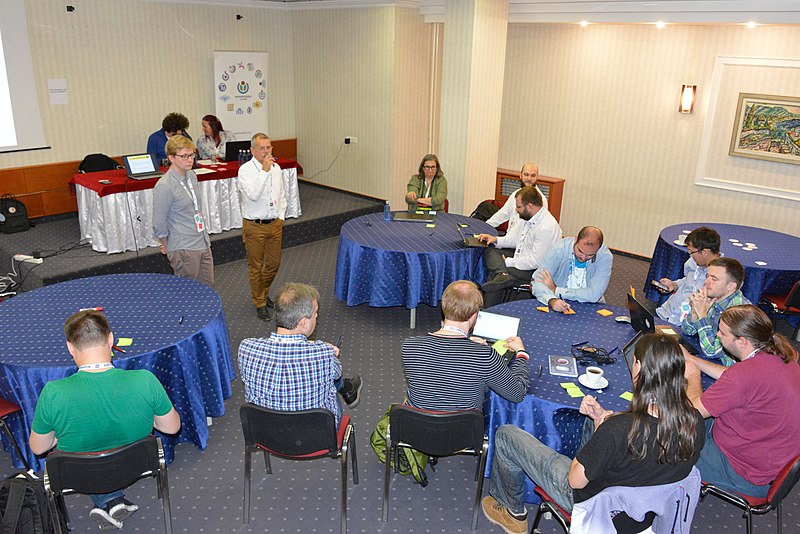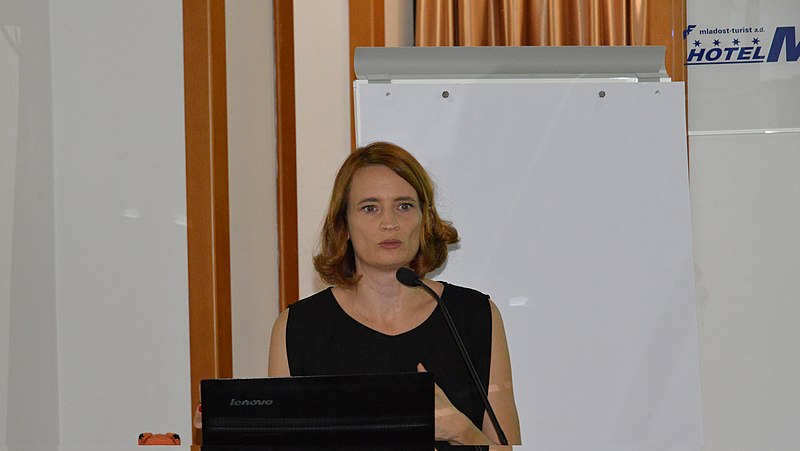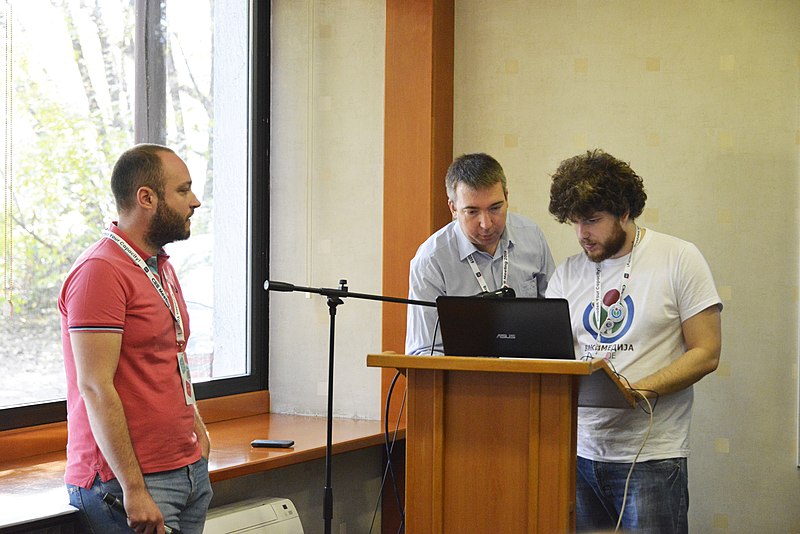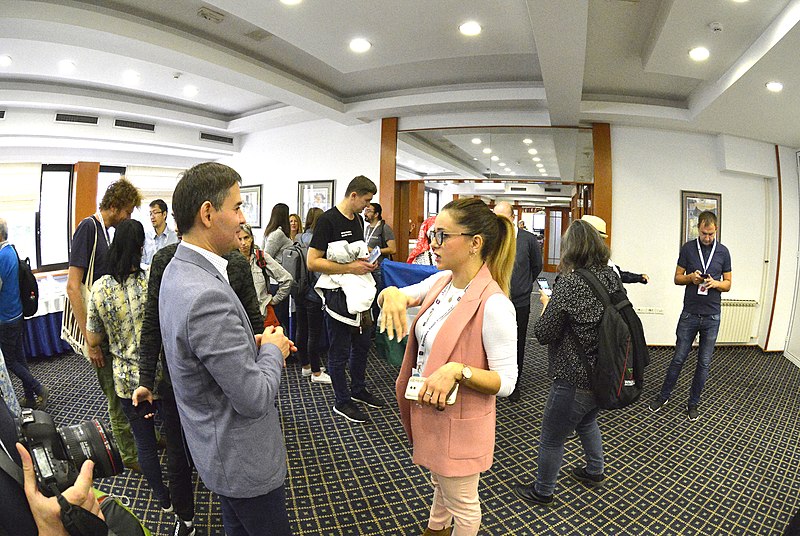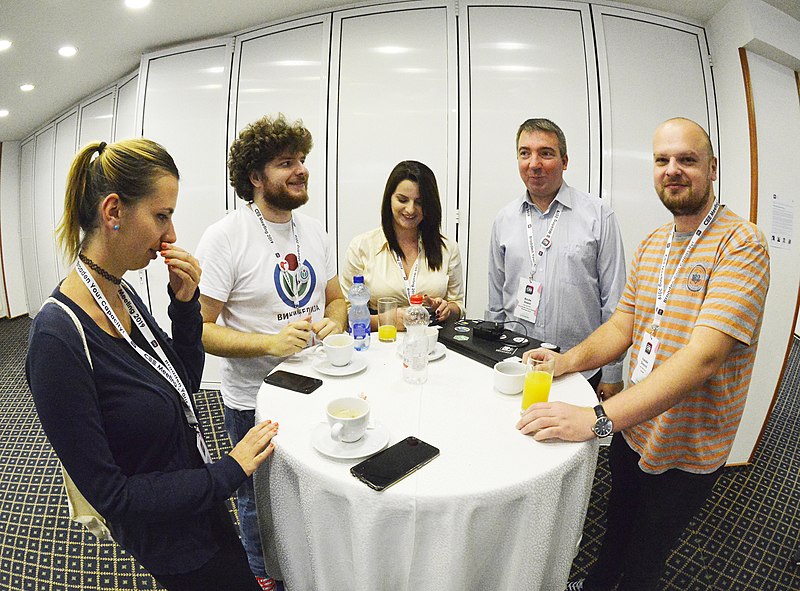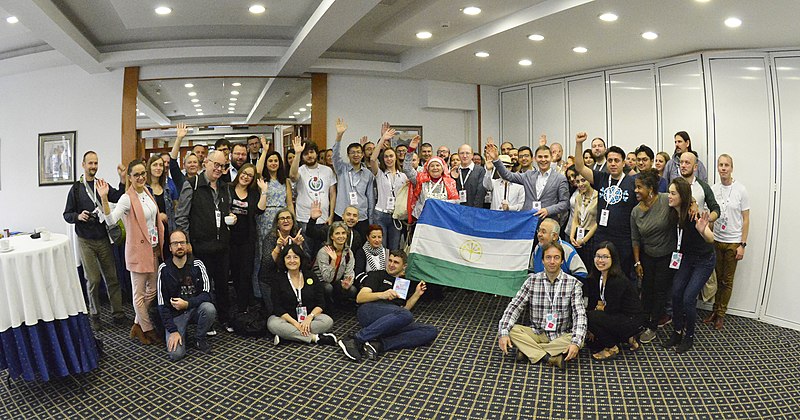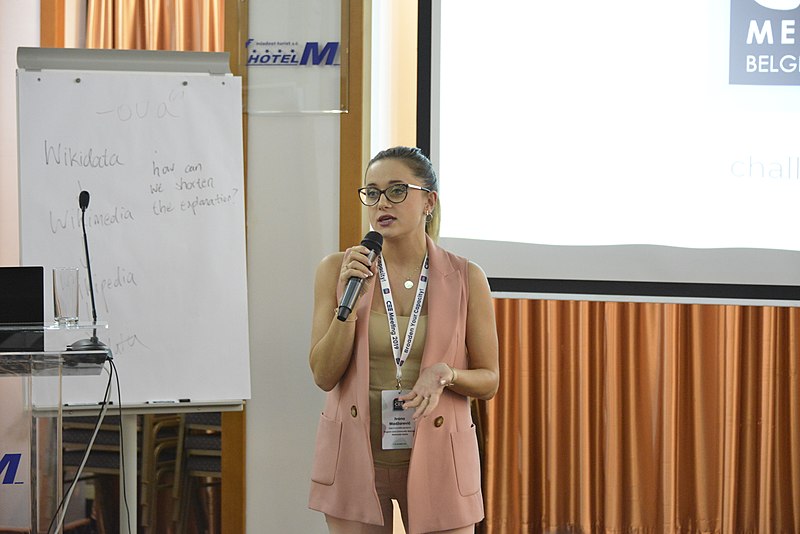Belgrade, October 15, 2019 – Belgrade was the host of this year’s gathering of Wikipedia editors and volunteers from Central and Eastern Europe, organized by Wikimedia Serbia and the Wikimedia Foundation. The conference was opened by Filip Maljković, President of Wikimedia Serbia, Valerie Da Costa, Head of the Community Engagement Team of the Wikimedia Foundation, Irina Reljin, Assistant Minister of Trade, Tourism and Telecommunications, and Ivana Madžarević, Program and Community Manager of Wikimedia Serbia and the organizer of the event.
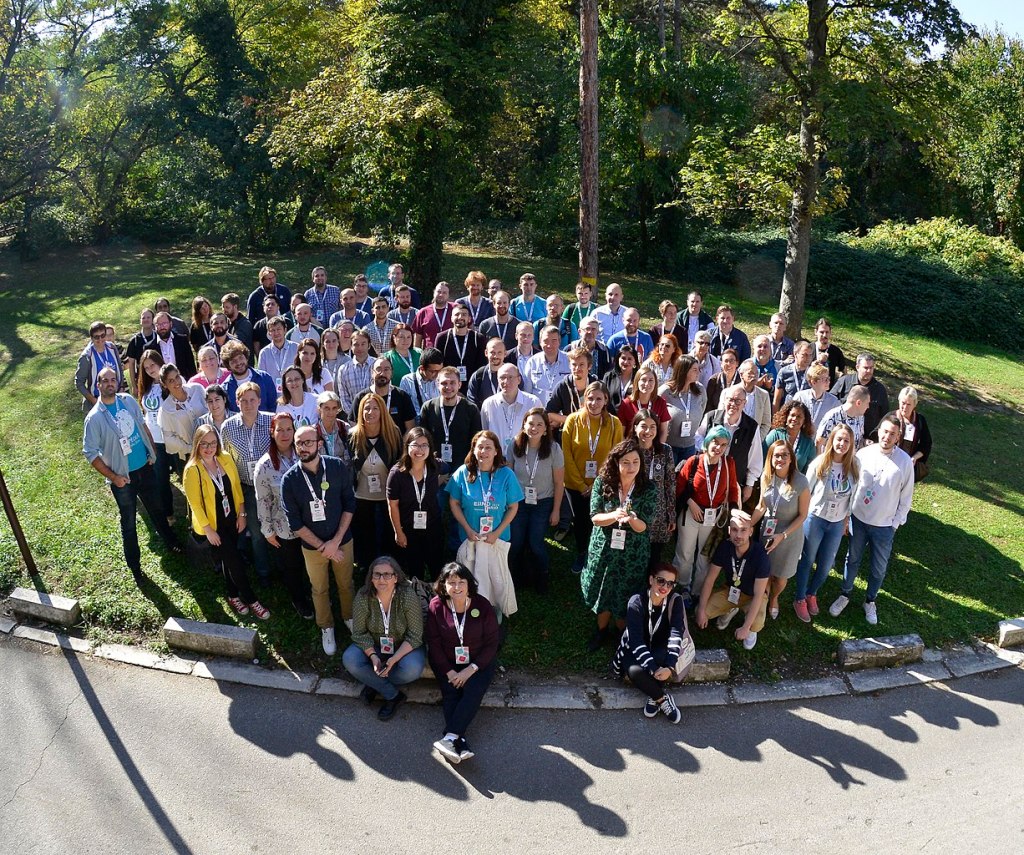
In his opening address, Filip Maljković recalled that the first such conference was held in 2012 in Belgrade, and emphasized that in this way the importance of the Central and Eastern European region is expanding and strengthening. Irina Reljin then pointed out the importance of the Ministry of Trade, Tourism and Telecommunications’ support to such events and initiatives, especially given that the Ministry is engaged in projects regarding the protection of people on the Internet.
This year, the conference was held under the slogan Broaden Your Capacity! It covered topics such as Wikipedia and other Wikimedia projects, free knowledge, available tools, as well as mutual cooperation of volunteers from this part of Europe. The event brought together close to 100 participants from more than 30 countries.
In addition to the main program, part of the audience participated in the pre-conference day, which was intended to enhance their skills. The training was delivered by Asaf Bartov of the Wikimedia Foundation and focused on volunteer motivation and retention, as well as conflict management.
The conference program was divided into three halls, depending on the topics covered. Thus, on the first day, participants had the opportunity to hear what kind of community projects in Central and Eastern Europe increase content on Wiki projects, what tools are used to make the content better and how to invest in volunteer motivation. The Wikimedia movement is currently working on a strategy for 2020-2030, so one session was devoted to a comprehensive strategy development process. As one of the main goals of the gathering is to share experiences in order to implement different models of cooperation in CEE affiliates, participants were giving “lightning” speeches. The idea behind this kind of presentation is for a larger number of people, and in this case eleven of them, to share the experience from the community they come from in a few minutes and show others how they can apply this model of cooperation. In addition, attention has been largely devoted to the topics of reducing the gender gap in wiki projects and the possibility of greater inclusion through various events and projects. In addition to interactive lectures and panel discussions, part of the program consisted of workshops, from which a Wikidata workshop can be distinguished.

I signed up for the conference to meet as many people as possible, and to learn something new. In this way, I got information about what Wikipedians do in other countries, what problems they are dealing with, and what kind of projects they have. We exchanged experiences together, which is of course the idea of the conference. What I liked most was the gender gap sessions, the sessions about diversity and its place on Wikipedia, as well as workshops on how to keep newcomers on Wikipedia. So I got some new ideas about projects that I want to implement in my community soon, which are about diversity among editors. I do not plan to stop here, but I also want to do something that other Wikipedians have done in their community, which concerns newcomers. Since this is my first conference at which I participate, I hope this will not be the last time and that in the coming years I will be even more active at conferences as well as in the community.
Milena Milenković, one of the participants from the local community
On the second day of the conference, participants were introduced to the ways of building partnerships and how they could achieve better results through these networks. A good part of the day was devoted to the community , which is the core of the movement. These sessions were divided into several sections: a healthy work atmosphere, volunteer engagement and available resources. Participants learned about a healthy working atmosphere in the community through round tables and lectures on editor retention, motivating and coordinating volunteers, as well as connecting different communities through the use of the new Wikimedia Space platform. Within community engagement, different approaches to volunteers were presented, for which online and offline resources were also presented. These resources should facilitate volunteer work as well as enhance their technical and soft skills. Participants could hear about technical skills in the block of sessions on Wikidata, as well as in the workshop on the mentioned project. At the end of the second day, the future of the CEE movement in the Wikimedia world was discussed, and socializing continued with the city tour and dinner in the famous bohemian quarter of Belgrade – Skadarlija.

I am extremely pleased with the response of the participants and the lecturers, as well as the efficiency of the whole team of volunteers, who put a lot of effort into making the conference work at its best. This is the largest gathering organized by Wikimedia Serbia so far and we have proven that we can be leaders in the CEE region, and that we are ready to grow and expand our capacity even more.
Impressions of Loci Miroslav, a member of the CEE Conference Organizing Team and Program Committee
During the third day of the conference, some of the most interesting topics were discussed. In a diverse movement such as Wikimedia, volunteers face a variety of challenges when it comes to the quality of content on Wiki projects. One of these is gender categorization that exists, or does not exist in some languages. Despite the various barriers, the Central and Eastern European communities continue to cooperate, especially with regard to the now-famous CEE Spring competition. During one session, the question of the innovations that could be introduced within the competition were raised. Speaking of innovation, one cannot bypass the presentation about the change in visual identity of Wikimedia expected in the coming years. The presentation sparked an interesting discussion among the communities. Apart from it, a great deal of attention was drawn to the selection session of the Wikimedia Foundation Board Members. In addition to presentations and discussions, one of the most interactive workshops involved mapping out the various activities which are performed to better track down new editors and volunteers. The recruitment of new volunteers is largely done through the Education Program, which was presented through Wiki clubs in Armenia or video tutorials in Serbia during this day.

Each year, this conference is a great opportunity to share experiences and ideas within a wide range of people from countries that are simultaneously distinguished by many similar and different things, but all aim to promote and expand the Wikimedia movement through sustained learning and collaborative collaboration. As chairman of the program committee, I am proud of my team for creating a comprehensive program that has been positively received by participants and has succeeded in meeting all the needs of their communities. Through my lectures, I shared my knowledge in a simple and practical way, and I think I was able to encourage and direct participants to think more openly and creatively for the future of regional cooperation and conferences. The thing I liked most was the invitation to experiment with new ideas in order to motivate and retain active users on Wikimedia projects. All in all, with the valuable help of volunteers, the conference organizers set a high standard for future organizers.
Kiril Simeonovski, chairman of the CEE Conference Program Committee

It was a great pleasure to have one such conference together with a team of volunteers from Wikimedia Serbia. Being participants from Central and Eastern European countries, we are all connected by a similar culture or history. This allows us to network and think together how we can collaborate and thus have a much greater impact than as individuals. This is precisely the idea of the 8th CEE gathering – to expand our capacities, not only through the sharing of knowledge and action of individual organizations, but through the joint work and use of available resources in different countries. The organization process took a year and although we were faced with various challenges, the success paid off when we had satisfied participants at the end of the conference, full of ideas and energy to launch those ideas.
Ivana Madzarevic, the organizer of the CEE conference
The partners of the conference were the Ministry of Trade, Tourism and Telecommunications, Tesla water, Telekom Serbia, the College of Electrical Engineering and Computing of Professional Studies in Belgrade, Car:Go, the Belgrade Tourist Organization and the Serbian Tourist Organization.
Photo credits: Wikimedia CEE Meeting 2019 participants 0.jpg, Wikimedia CEE Meeting 2019 Day 0 – Pre-conference Day 23.jpg, Wikimedia CEE Meeting 2019 Day 0 – Pre-conference Day 19.jpg, Wikimedia CEE Meeting 2019 Day 0 – Pre-conference Day 1.jpg, Wikimedia CEE Meeting 2019 Day 0 – Pre-conference Day 12.jpg, Wikimedia CEE Meeting 2019 Day 1 – 224.jpg, Wikimedia CEE Meeting 2019 Day 1 – 203.jpg, Wikimedia CEE Meeting 2019 Day 1 – 165.jpg, Wikimedia CEE Meeting 2019 Day 1 – 167.jpg, Wikimedia CEE Meeting 2019 Day 1 – 159.jpg, Wikimedia CEE Meeting 2019 Day 1 – 104.jpg, Wikimedia CEE Meeting 2019 Day 1 – 087.jpg, Wikimedia CEE Meeting 2019 Day 1 – 067.jpg, Wikimedia CEE Meeting 2019 Day 1 – 039.jpg, Wikimedia CEE Meeting 2019 Day 1 – 045.jpg, Wikimedia CEE Meeting 2019 Day 1 – 008.jpg, кропована фотографија Wikimedia CEE Meeting 2019 Day 1 – 176.jpg, Wikimedia CEE Meeting 2019 day 2 – 41.jpg, Wikimedia CEE Meeting 2019 day 2 – 38.jpg, Wikimedia CEE Meeting 2019 day 2 – 35.jpg, Wikimedia CEE Meeting 2019 day 2 – 23.jpg, Wikimedia CEE Meeting 2019 day 2 – 18.jpg, Wikimedia CEE Meeting 2019 Day 1 – 189.jpg, Wikimedia CEE Meeting 2019 Day 1 – 131.jpg, Wikimedia CEE Meeting 2019 day 3 – 23.jpg, Wikimedia CEE Meeting 2019 day 3 – 03.jpg, Wikimedia CEE Meeting 2019 day 3 – 01.jpg, Wikimedia CEE Meeting 2019 day 3 – 12.jpg, Wikimedia CEE Meeting 2019 day 3 – 21.jpg, Wikimedia CEE Meeting 2019 day 3 – 34.jpg, Wikimedia CEE Meeting 2019 day 3 – 44.jpg, under cc by sa-4.0, author Miomir Magdevski, Wikimedia CEE Meeting 2019 Learning Days Group Photo 1.jpg, under cc by sa-4.0, author Magioladitis, Erzia and Bashkortostan CEE 2019 participants.jpg, under cc by sa-4.0, author Visem, Wikimedia CEE Meeting 2019 17.jpg, under cc by sa-4.0, author Миљан Симоновић from Wikimedia Commons.

Can you help us translate this article?
In order for this article to reach as many people as possible we would like your help. Can you translate this article to get the message out?
Start translation
